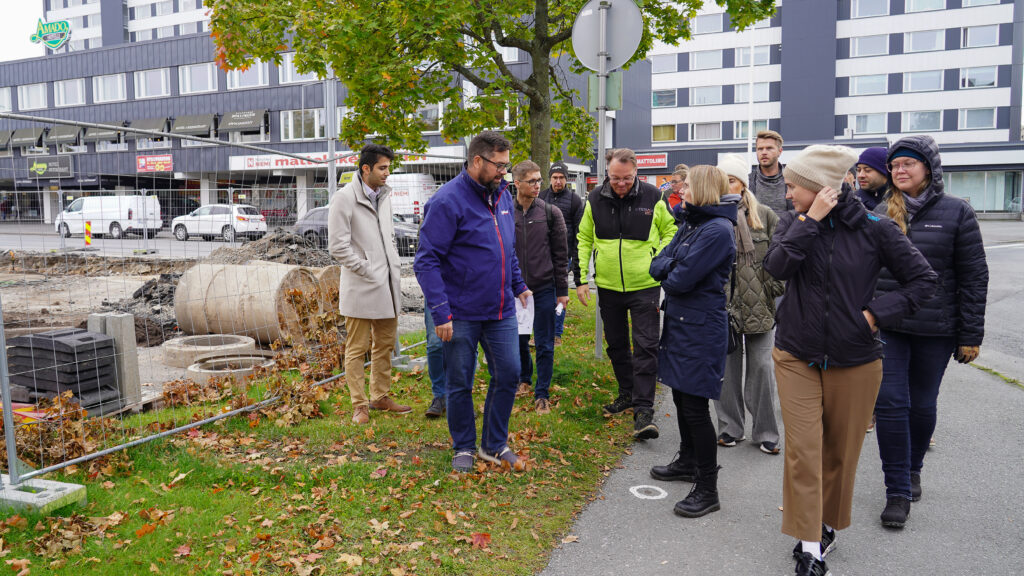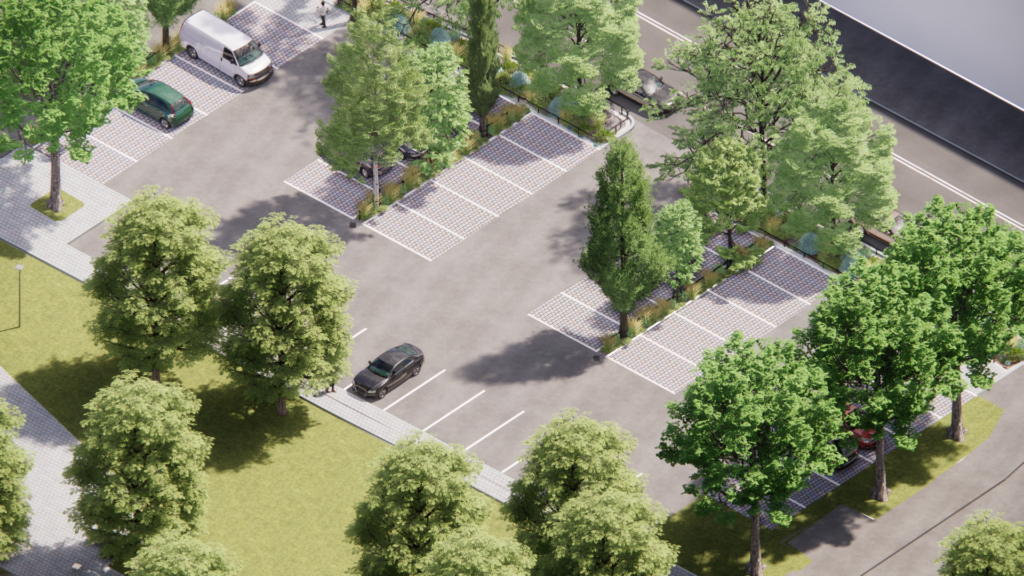Pilot Site in Spotlight: Pori’s Stormwater Tree Solution
The City of Pori’s pilot site number two will be a green oasis in the middle of the city. Find out numerous ways how trees benefit both stormwater systems and city environment.

Photo: Krista Valkonen
To plant a tree is to believe in greener tomorrow. Such is the mindset in the MUSTBE project: planning and creating multi-benefit stormwater treatment solutions is an investment into a environmental-friendlier future of the Baltic Sea region. The main goal of the project is to reduce the runoff of harmful substances into the natural waterways. Dense urban areas, including rooftops and streets, contribute heavy metals, suspended solids, oil products, nutrients and other stormwater pollutants into the runoff water.
The City of Pori, located on the West Coast of Finland on the Gulf of Bothnia, has two MUSTBE pilot sites representing different kinds of solutions to stormwater treatment. Trees have a major role in the pilot site located in the centre of the city.
The parking area in a high traffic environment has had trees which did not thrive in the environment. The purpose of this pilot site’s stormwater treatment solution is to combine green structures and water detention, manage stormwater peaks, and reduce the discharge of harmful substances into water bodies. The pilot site’s construction work began in September 2024. The old trees were cut down and the old concrete layer and topsoil were removed.
– To build something beautiful, you have to break something first, MUSTBE Project Manager and Civil Engineer Constructor Aleksi Siirtola from City of Pori.
The Nature-Based Solution Bases on Underground Layers and Drains

New trees will be planted on top of specially designed soil layers that will facilitate accumulation of peak runoffs as well as provide the roots enough oxygen and nutrients. In this nature-based solution (later in the text: NBS), such layers are, for example, sand and gravel. The NBS will also contain underground drains for directing the stormwaters to the green corridors. Hence the trees accumulate excess runoff, treat stormwater and reduce runoff to the downstream pipeline. The NBS will store stormwater during dry periods, thus ensuring that the tree roots have enough water.
– Stormwater runoff was earlier directed straight to stormwater ditches, not to the ground. The trees in the parking lot didn’t receive enough water to grow. In addition, the ground around the trees was compacted and the roots of the trees did not receive enough oxygen. This also has a negative impact on tree growth, Siirtola explains.
According to the literature, one tree can absorb up to 6 m³ of rainwater. Tree-based solutions can therefore reduce the load towards cities’ stormwater systems especially during heavy rain falls, when the systems can be overloaded. The city of Pori has had an unforgettable experience about the matter: Finland’s presumably most severe city flood ever was in the centre of Pori in 2007. Furthermore, the stormwater tree solution will reduce the need to construct new pipelines and treatment solutions.
As for the harmful substances in the runoff water, the MUSTBE project has promised to deliver the following goal: removal of at least 60% of suspended solids, 30% of nitrogen, 50% of hydrocarbons (from oil products) and 40% of metals.
Duplicating the ideas will be encouraged

Other benefits are also related to the increase of urban greenery. Creating a more pleasant landscape by planting more trees has an impact on the city population’s well-being. In addition to help preventing urban floods, the trees will reduce noise and provide shade to reduce urban heat.
A growing concern about extreme natural phenomena, caused by climate change has been noticed in municipal environmental and urban construction strategies. The need for improved stormwater management solutions has become more evident. Urbanisation means more impermeable surfaces, such as pavements and motor roads, increasing the risk of flooding. In addition, the increasing number of heavy rainfalls sets a growing pressure to improve stormwater solutions.
Pori’s stormwater tree solution is an example which can be easily adapted in any other urban area. After the pilot, the City of Pori plans to adapt the solution in other areas as well, with the experience of using the best methods learned from the MUSTBE project also from other project partners.
Project facts
- The MUSTBE project is led by Estonian municipality Viimsi.
- In addition to Viimsi and Pori, other project partners are City of Tallinn (Estonia), municipality of Söderhamn (Sweden), City of Riga (Latvia), Tallinn University of Technology (Estonia), Satakunta University of Applied Sciences (Finland), and Riga Technical University (Latvia).
- The project has seven pilot sites in total: alongside with Pori’s two pilot sites, there is one in Tallinn, one in Viimsi, one in Riga, and two in Söderhamn.
- MUSTBE, (Multidimensional stormwater treatment in urban areas for cleaner Baltic Sea), is co-funded by the Interreg Central Baltic programme.
- The project started 1.5.2023, and will end on-30.5.2026.
- The project budget is 3,980,476.00 € in total.
Writers and editors: Krista Valkonen, Hanna Kajander and Meri-Maaria Salo

